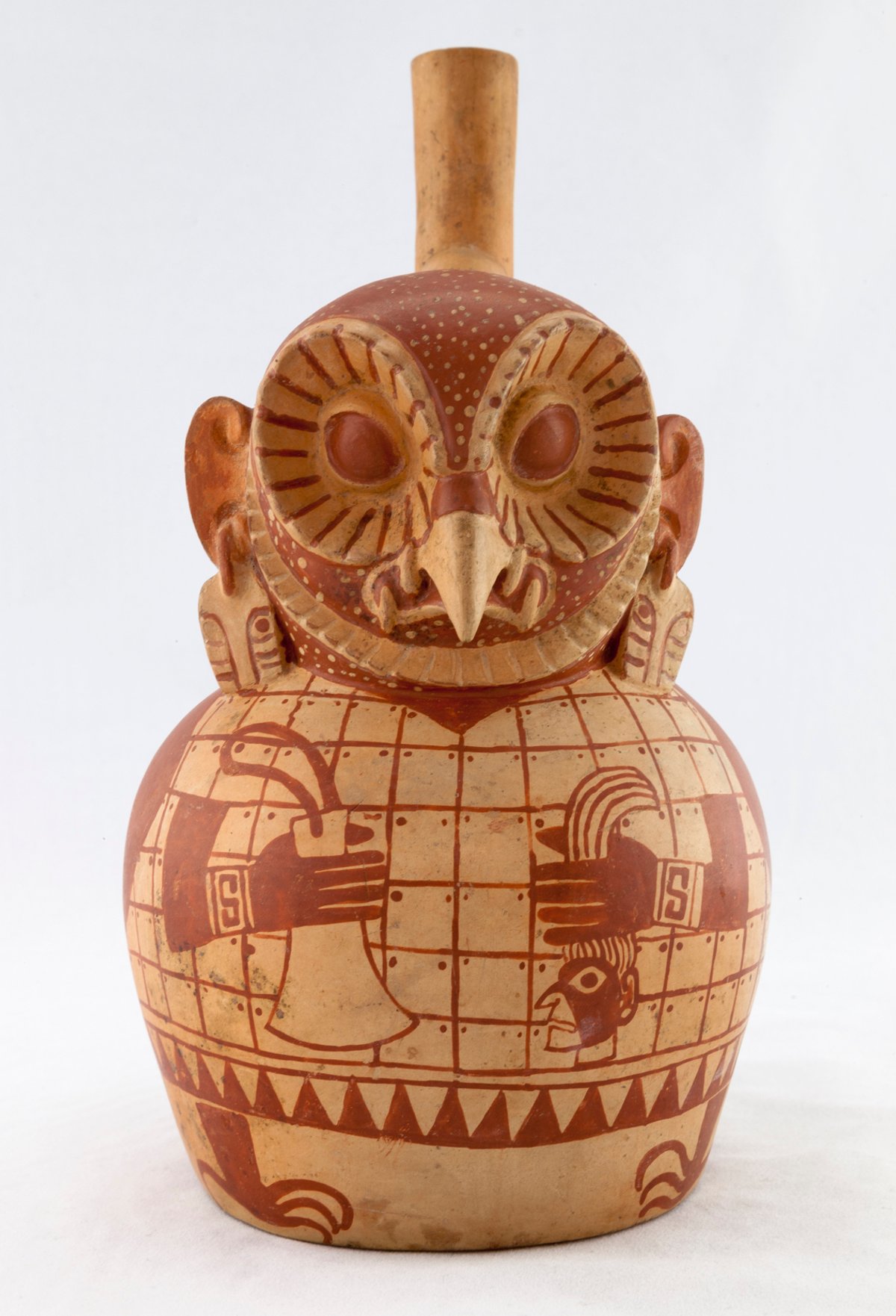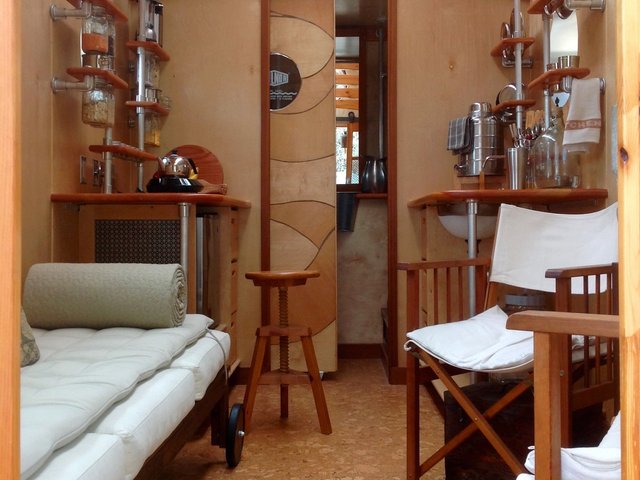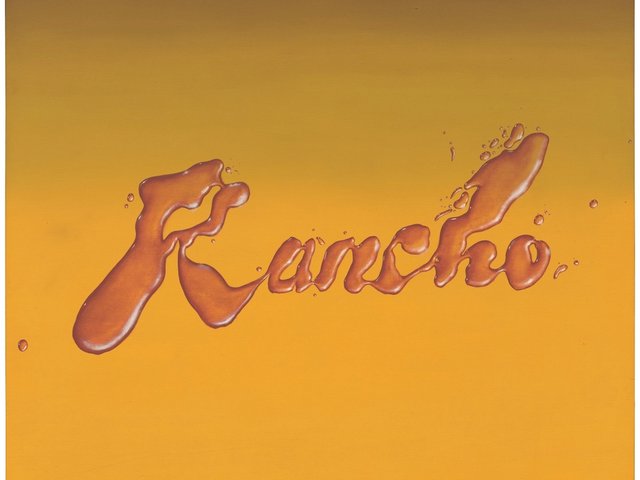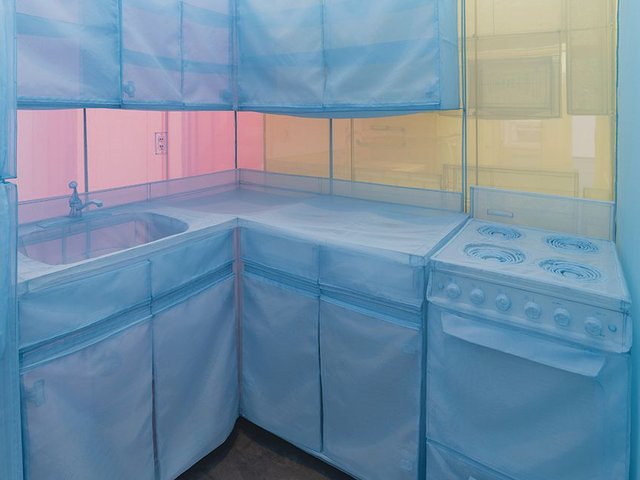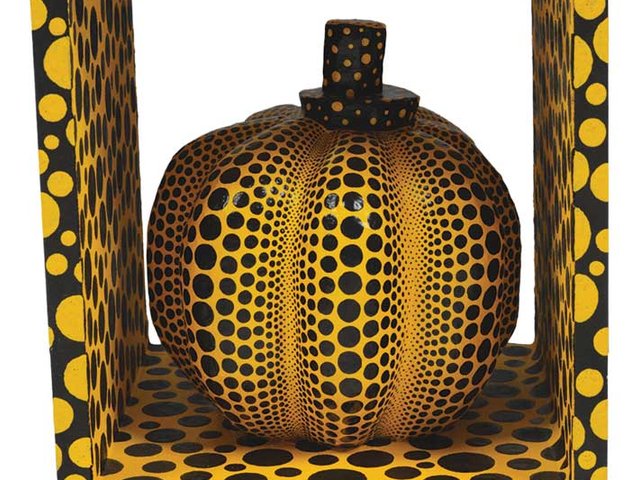Taming the Desert: Resilience, Religion and Ancestors in Ancient Peru
Fowler Museum at UCLA, Los Angeles, until 13 April
Along Peru’s desert coast, despite unpredictable weather and harsh conditions, some of the oldest and most advanced civilisations in the Americas blossomed. Over thousands of years, cities and agricultural centres cropped up in the region, forming extensive trade networks between them. Throughout the first millennium AD, the Moche in the north and Nasca to the south—makers of the famous Nasca Lines—created objects and unique aesthetics to express their beliefs and rituals, which they devised as a means of surviving nature’s perpetual swing from torrential flood to drought. The 34 ceramics and textiles on view at the Fowler Museum are taken from the institution's own collections as well as from the Los Angeles County Museum of Art. Works from the parallel civilisations are displayed side by side, so that visitors can compare and contrast these two unique worldviews as the Moche and Nasca aspired to tame the desert with the help of outlandish creatures, wise ancestors and mystical beings. E.G.
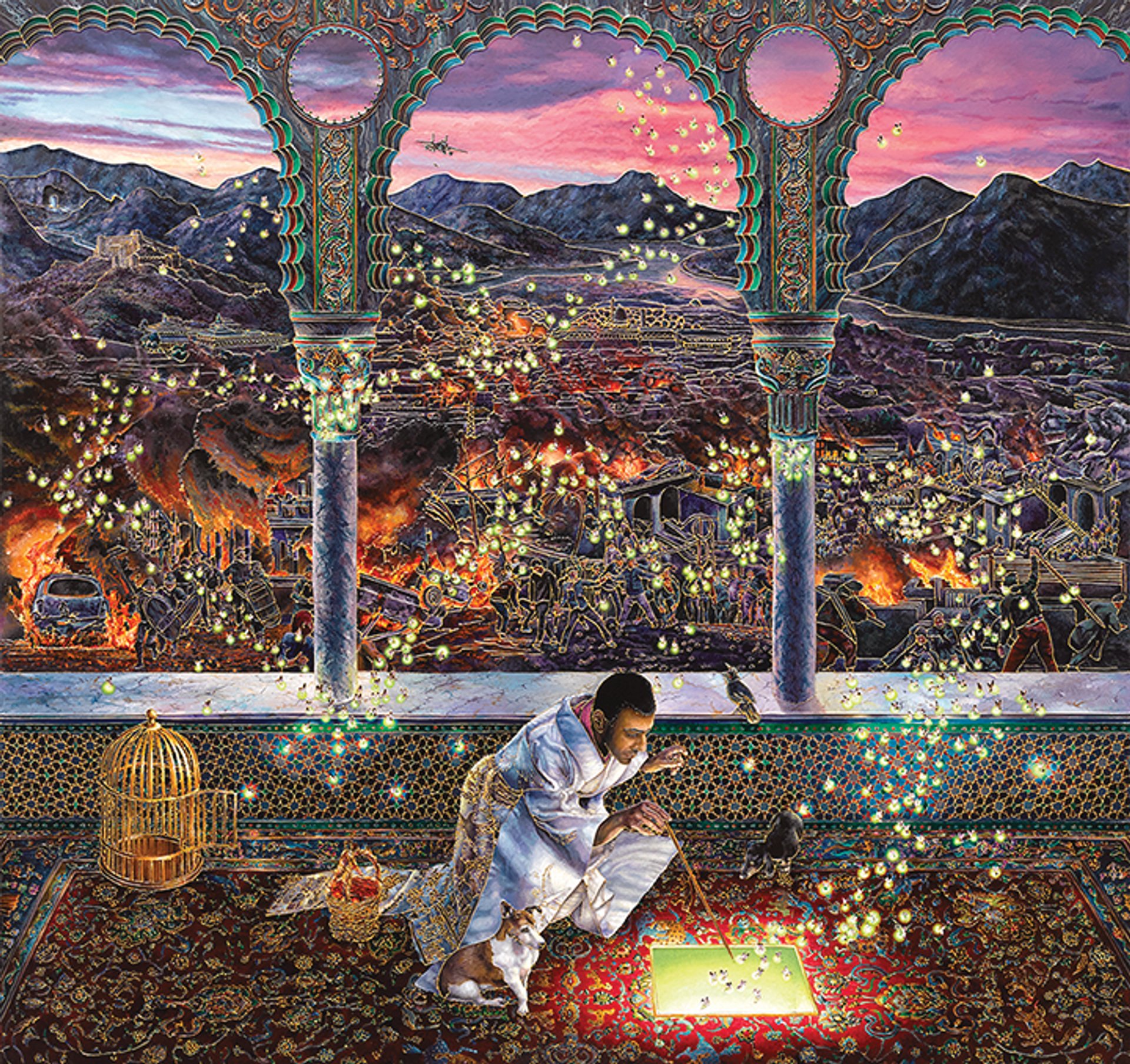
Raqib Shaw, Ode to the Country Without a Post Office (2019-20) Photo: © the artist and White Cube/Theo Christelis; © the artist
Raqib Shaw: Ballads of East and West
The Huntington Library, Art Museum and Botanical Gardens, San Marino, until 3 March
For his first solo museum show on the West Coast, the Kolkata-born, London-based artist Raqib Shaw transformed two of his ornate paintings riffing on Old Masters into tapestries to hang in the Huntington’s grand staircase. Both works feature art-historical allusions (to Pieter Brueghel the Elder and John Martin, for instance) and Shaw’s trademark melding of apocalyptic and utopian imagery.
The exhibition also includes seven compositions rendered in the artist’s characteristic mode of enamel painting, which reflect his passion for Old Master painting, reference his childhood in India’s Kashmir Valley (an area racked by sectarian violence), meld Eastern with Western mythology—and evidence his irreverent humour. In The Retrospective, 2002-22 (2015-22), for instance, he incorporates miniatures of his own works into a reinterpretation of Giovanni Paolo Panini’s Picture Gallery with Views of Modern Rome (1757), but here the tiny figure of Shaw stands atop a stack of shipping crates, brandishing a toilet plunger. B.S.
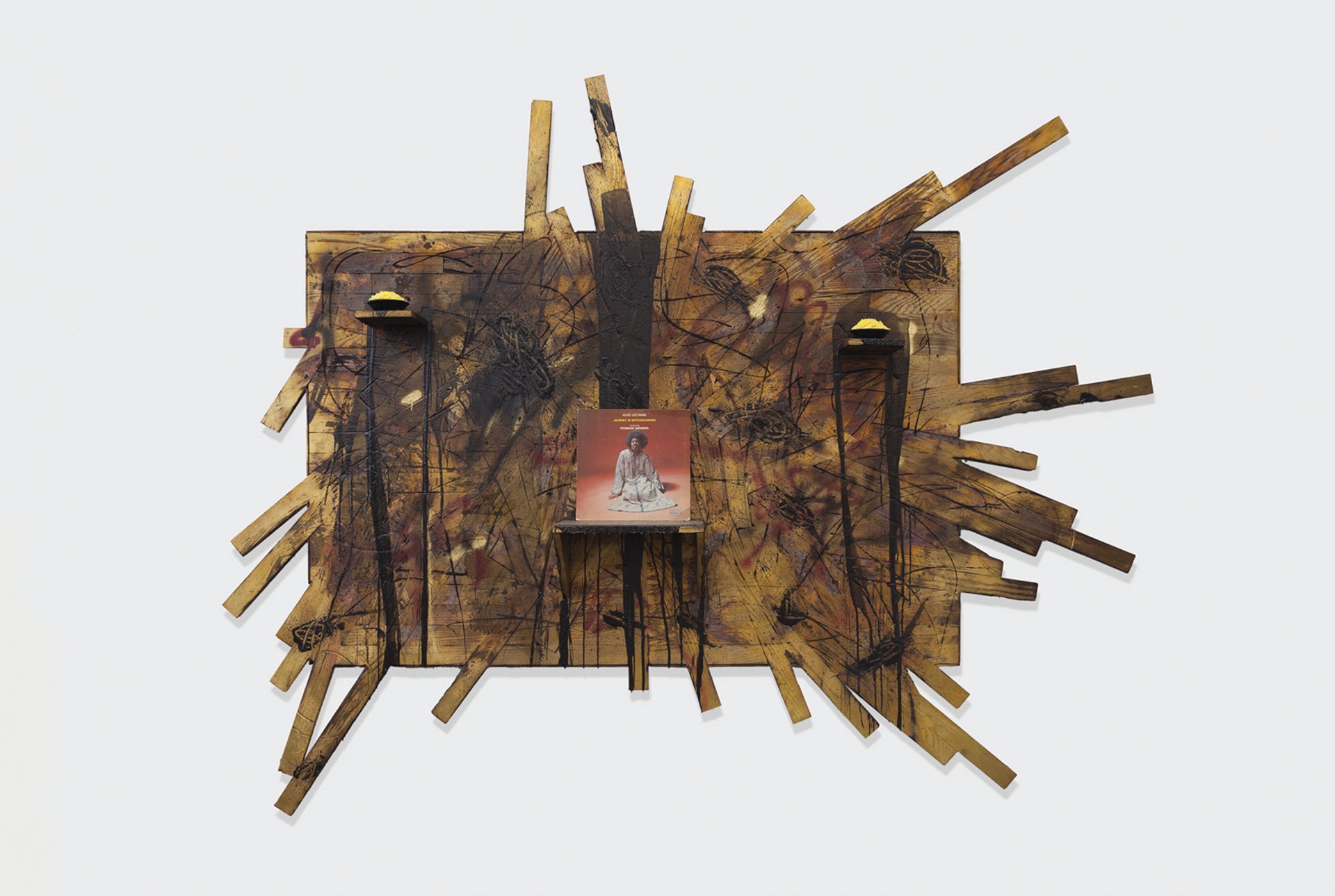
Rashid Johnson, Gotta Match (2014) Photo: Martin Parsekian; Courtesy of David Kordansky Gallery, Los Angeles
Alice Coltrane, Monument Eternal
Hammer Museum, Los Angeles, until 4 May
“When I listen to her music, I feel like I’m being healed at a cellular level,” the curator Erin Christovale says of the late Alice Coltrane (1937-2007). Monument Eternal unites the work of 19 contemporary artists with Coltrane’s handwritten sheet music, unreleased audio recordings and rarely seen video footage of her 1980s television series.
For the exhibition, Christovale sought out an intergenerational, coast-to-coast cross-section of Black American artists who engage with the legacy of Black American music, incorporate sound or have made pieces referencing Coltrane herself.
At the centre of Rashid Johnson’s Gotta Match (2014) is Coltrane’s 1971 album Journey in Satchidananda, which Johnson calls “a spiritual revelation”. Meanwhile, Bethany Collins depicts a musical score that blends Coltrane’s rendition of the song Goin’ Home with a rewriting of Battle Hymn of the Republic. Collins says: “The resonance I found with Alice was in a belief in repetition as a path towards transformation—she might say ‘transcendence’.” T.S.
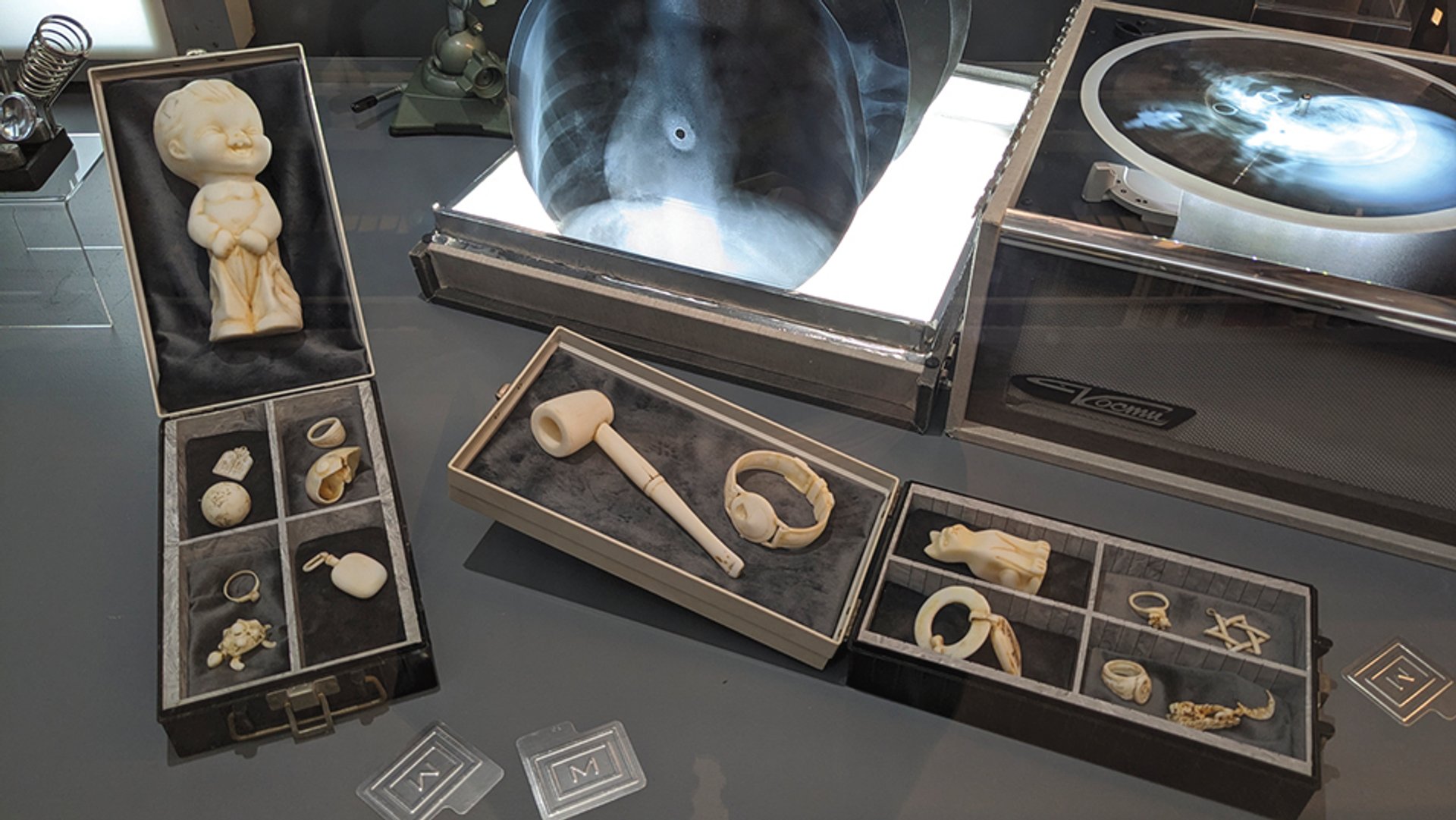
Jenny Yurshansky, vintage slide cases with 3D printed replicas of family keepsakes Courtesy of the artist
Jenny Yurshansky: Rinsing the Bones
Wende Museum, Culver City, until 6 April
Jenny Yurshansky’s work often focuses on issues of migration, displacement and alienation, especially as their effects endure across generations. The title of her solo exhibition at the Wende Museum is a Russian expression that originated from an ancient Slavic rite, in which a deceased person would be exhumed and their bones washed as a means of physical and spiritual cleansing. The family members performing the ritual would recount the life of their loved one as they rinsed their bones, thereby releasing the soul of the deceased. Yurshansky seeks to provide this same kind of catharsis through her show. In preparing for the exhibition, she invited community members to share their stories and keepsakes, which she incorporated into her works. “Together, we unearthed, traced and revealed the meta-narratives that bridge our disparate histories,” she says, “bringing into focus the pattern of gaps that result from displacement and the complexity of the word ‘home’ as an uncertain, unstable space located outside the frame of nostalgia.” E.G.
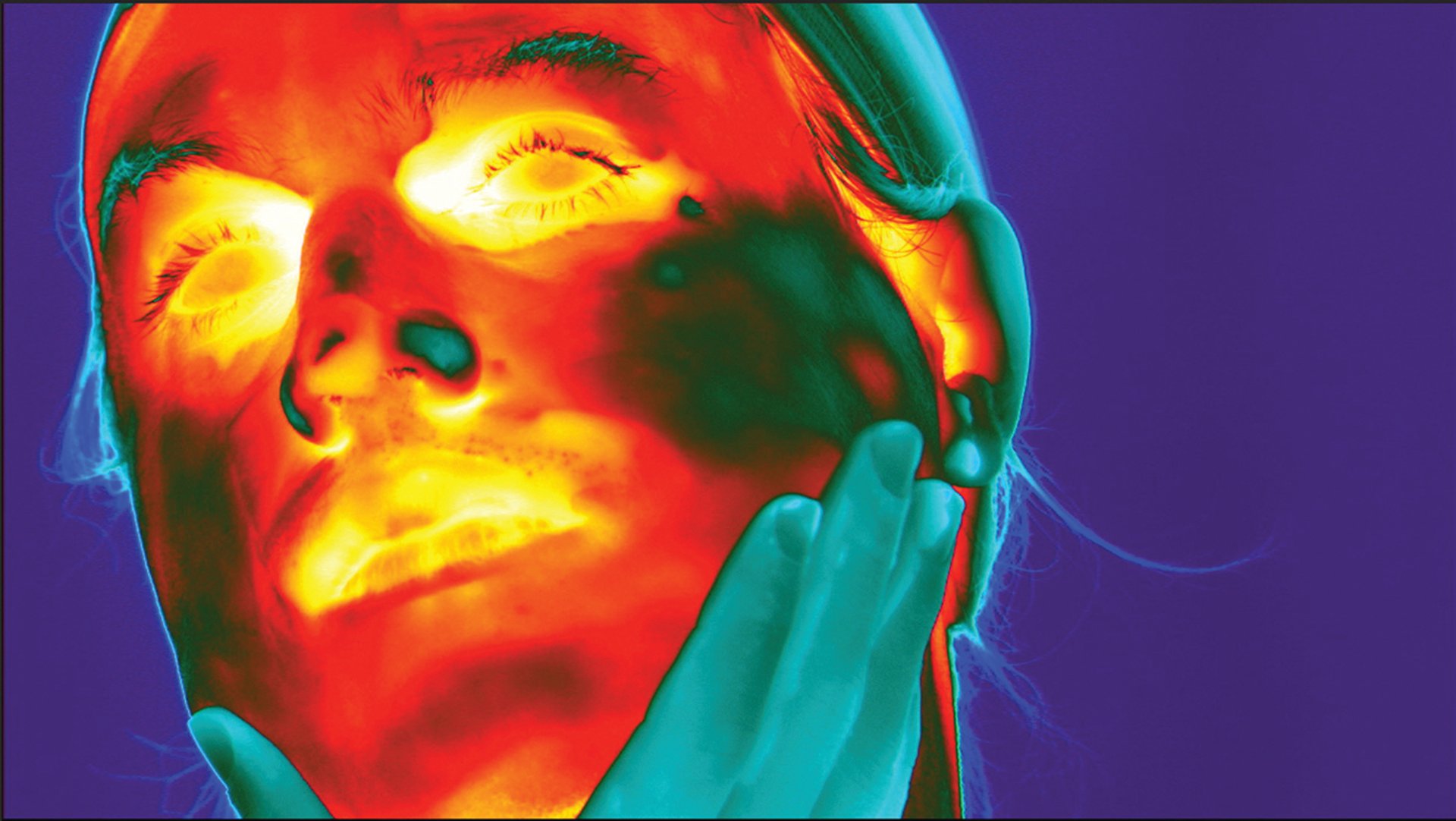
A still from P. Staff’s video Weed Killer (2017) Courtesy of the artist and Commonwealth and Council
Earthshaker
Del Vaz Projects, Los Angeles, until 18 April
Derek Jarman, Ana Mendieta and P. Staff are featured in Del Vaz Projects’ most ambitious exhibition to date. Earthshaker’s artists, united by their shared invocation of alchemical transmutations and queer ecologies, foreground how humanity’s contamination of the landscape is continually reified in our bodies by a toxic environment. Jarman’s Black Paintings (1986-93), for example, abstractly constitute a body through a constellation of found objects embedded in a black tar-like surface that echoes the process of melanosis. During the Industrial Revolution, moths evolved to be darker colours to avoid predators by blending in with the pollution. This is a burning and blackening that must take place before something new can emerge from the ashes. Much like the process of melanosis that metaphorically undergirds the exhibition, the literal black soot, smoke and rubble that has plagued Los Angeles may turn out to be the alchemical ash from which new hope rises. H.S.K.
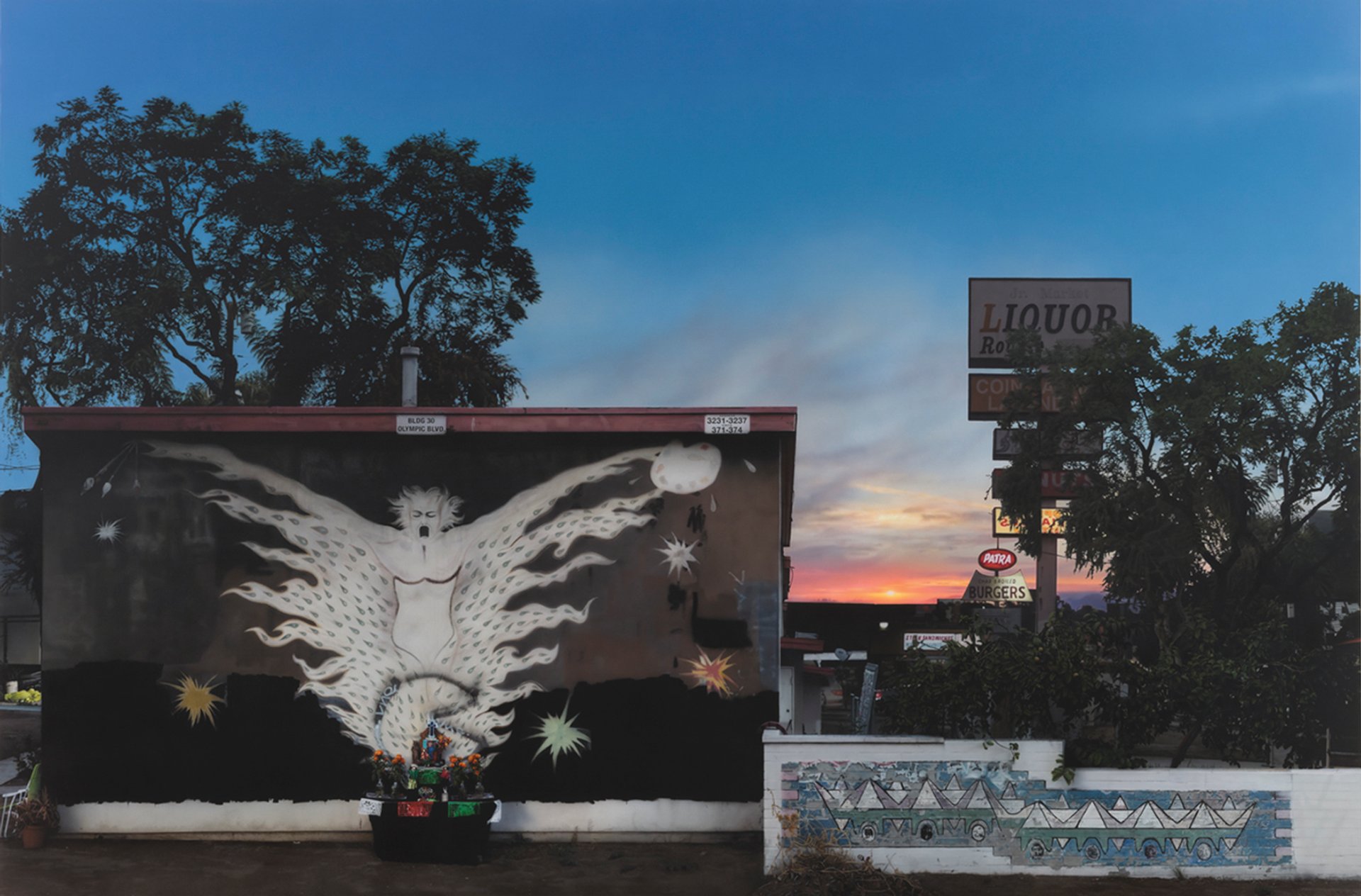
Sayre Gomez, 2 Spirits (2024) Photo: Jeff McLane; Courtesy of the artist, François Ghebaly Gallery, Xavier Hufkens and Galerie Nagel Draxler
Ordinary People: Photorealism and the Work of Art Since 1968
Museum of Contemporary Art, Grand Avenue, Los Angeles, until 4 May
The Museum of Contemporary Art’s re-examination of photorealist painting and sculpture, featuring more than 40 artists, makes a case for the historical and political modalities pushing photorealism to the forefront of post-war consciousness, reframing the labour-intensive, devotional act of rendering as a portal for viewer experience. The show highlights titans of the canon, like Chuck Close, Audrey Flack and Richard Estes, as well as newer contributors. With a renewed focus on the triangulation of value, populism and taste, Ordinary People proves that the devil is truly in the detail. T.A.
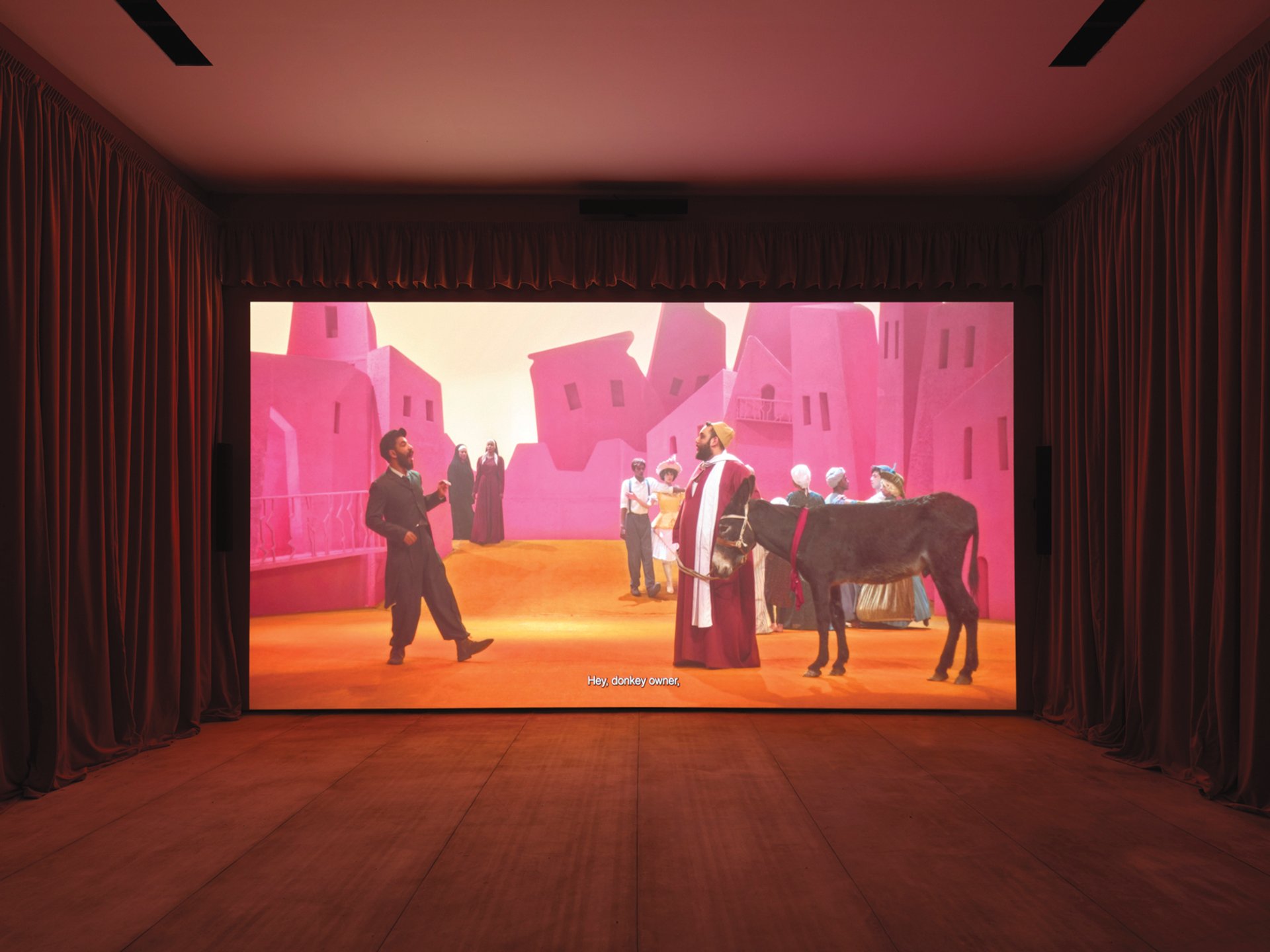
A still from Wael Shawky’s Drama 1882 © the artist; Courtesy of Sfeir-Semler Gallery, Lisson Gallery, Lia Rumma and Barakat Contemporary
Wael Shawky: Drama 1882
Museum of Contemporary Art, Geffen, Los Angeles, until 16 March
This show marks the US premiere of Shawky’s project for the Egyptian pavilion at last year’s Venice Biennale, an epic video installation that melds historical fact and speculation in retelling, as an opera, an event that set into motion Britain’s colonial rule of Egypt for the better part of a century. Performed entirely in classical Arabic, the opera features expressionist sets and vivid costumes, portraying an episode from the Urabi revolution of 1879-82. The poignant video was filmed entirely in an historic theatre in the artist’s hometown of Alexandria and, as Shawky puts it, “conjures a sense of entertainment, of catastrophe and our inherent doubt in history”. B.S.
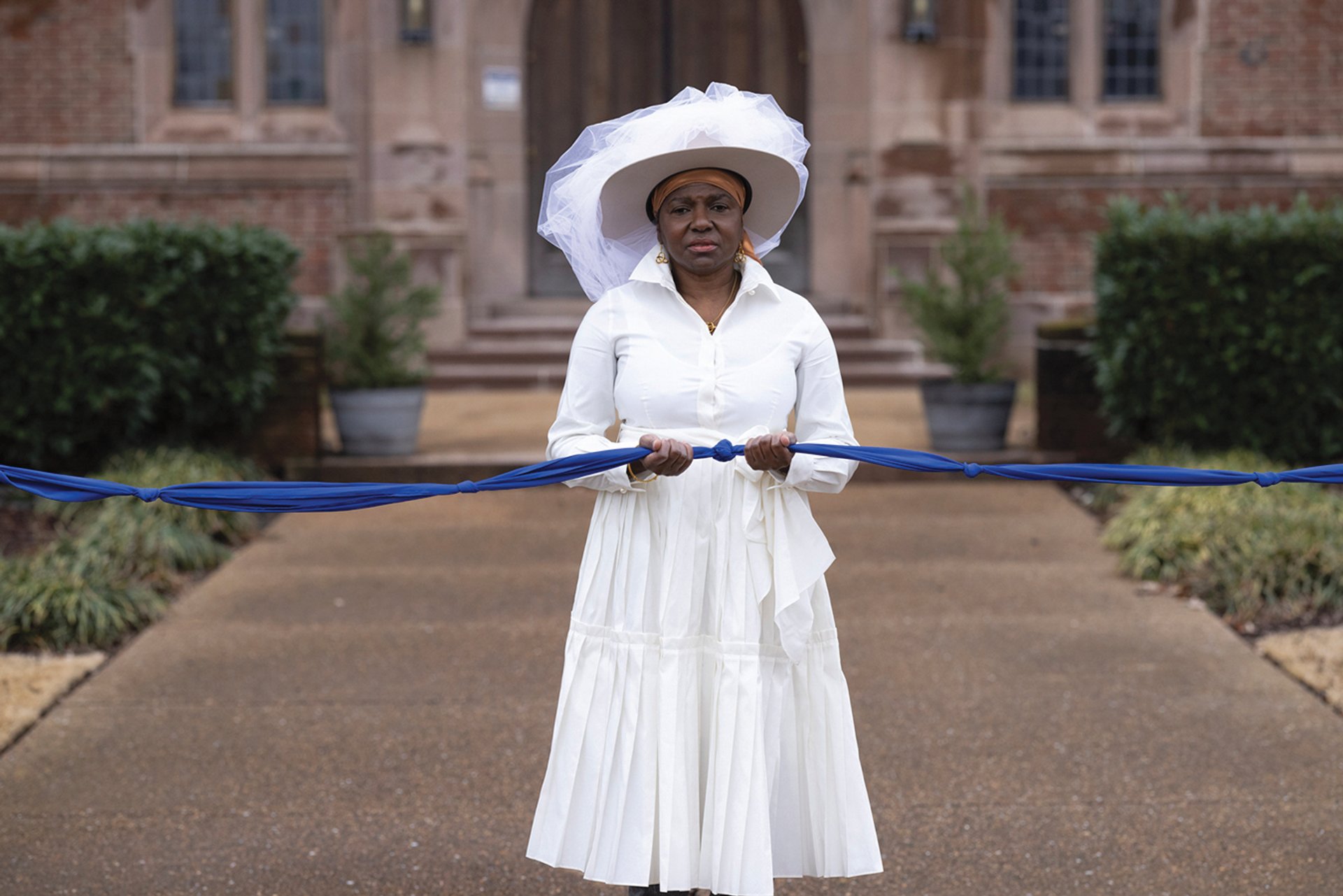
A still from Campos-Pons’s video When We Gather (2021) Courtesy of the artist and Gallery Wendi Norris, San Francisco; © the artist
María Magdalena Campos-Pons: Behold
J. Paul Getty Museum, Los Angeles, until 4 May
A joint effort between the Getty and the Brooklyn Museum, María Magdalena Campos-Pons: Behold presents more than 40 multimedia works by the Cuban-born, Nashville-based artist spanning almost 40 years. Exploring migration, diaspora, colonialism, memory, intersectional feminism and Santería through photography, video, painting, installation and performance (at times in collaboration with the musician Neil Leonard), Campos-Pons flips the power dynamic between artist and subject, replacing voyeurism with “a careful act of beholding”. It is an empathy informed, in part, by her own history of migration and her ancestors’ enslavement and indentured servitude. E.G.
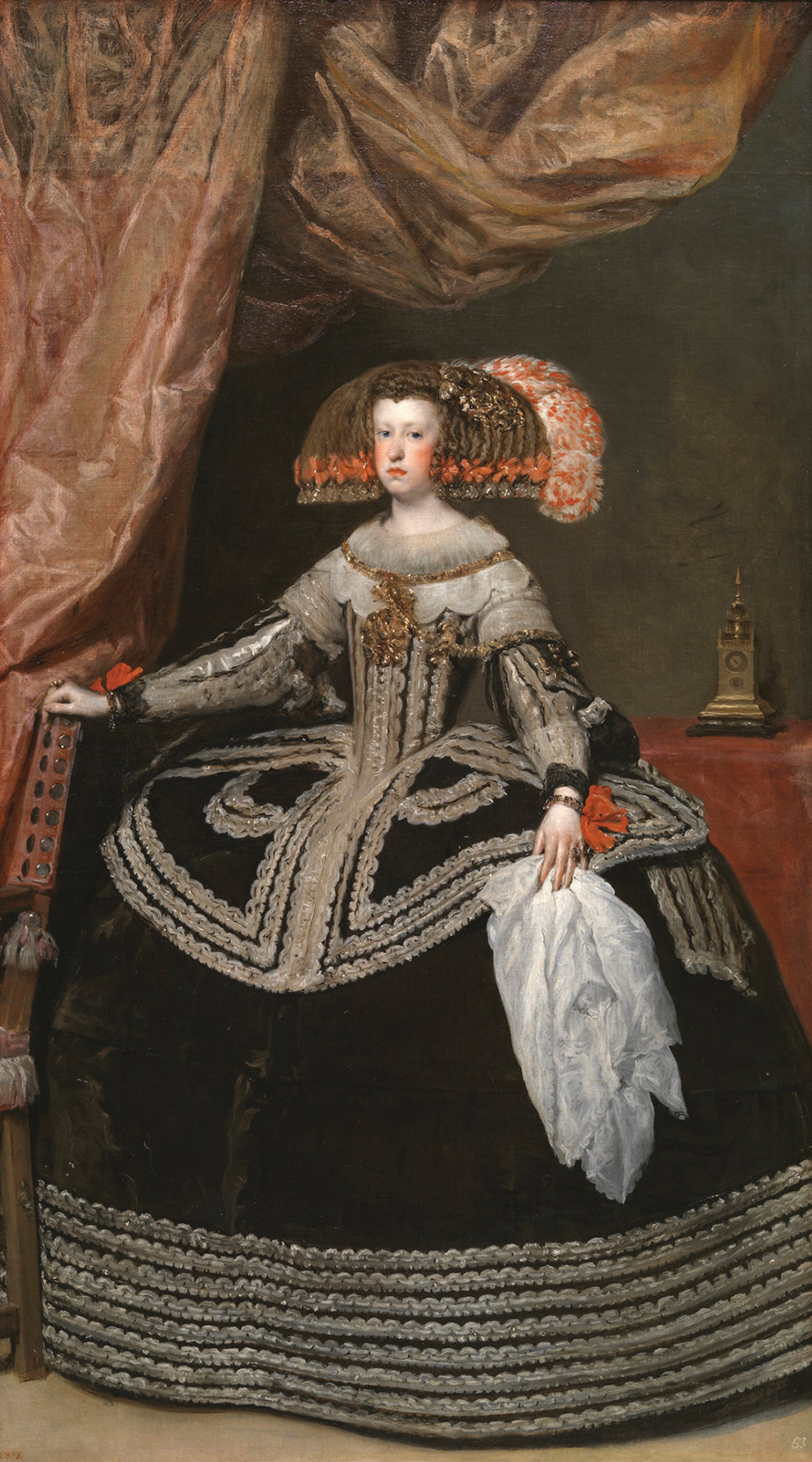
Diego Velázquez, portrait of Queen Mariana of Austria (around 1652-53) Photo: © Photographic Archive Museo Nacional del Prado
Mariana: Velázquez’s Portrait of a Queen from the Museo Nacional del Prado
Norton Simon Museum, Pasadena, until 25 March
This exhibition makes the most of the Norton Simon’s Loan Exchange Program with the Museo Nacional del Prado in Madrid. At the show’s core is a masterpiece by Diego Velázquez, a painting of Queen Mariana of Austria (around 1652-53), depicting the simultaneous fragility and opulence of the teenage ruler with depth and panache. The girl-queen, having recently given birth and clad in an enormous, rigid guardifante skirt, stares at the viewer with a sombre expression, captured with no shortage of sensitivity by an artist in the final stage of his career. The work’s significance is contextualised with paintings by the Habsburg court regulars Nicolas Poussin, Guido Reni and Peter Paul Rubens. This marks the first display of Queen Mariana of Austria on the West Coast, a rare opportunity to experience the legacy of a 17th-century genius first-hand. T.A.
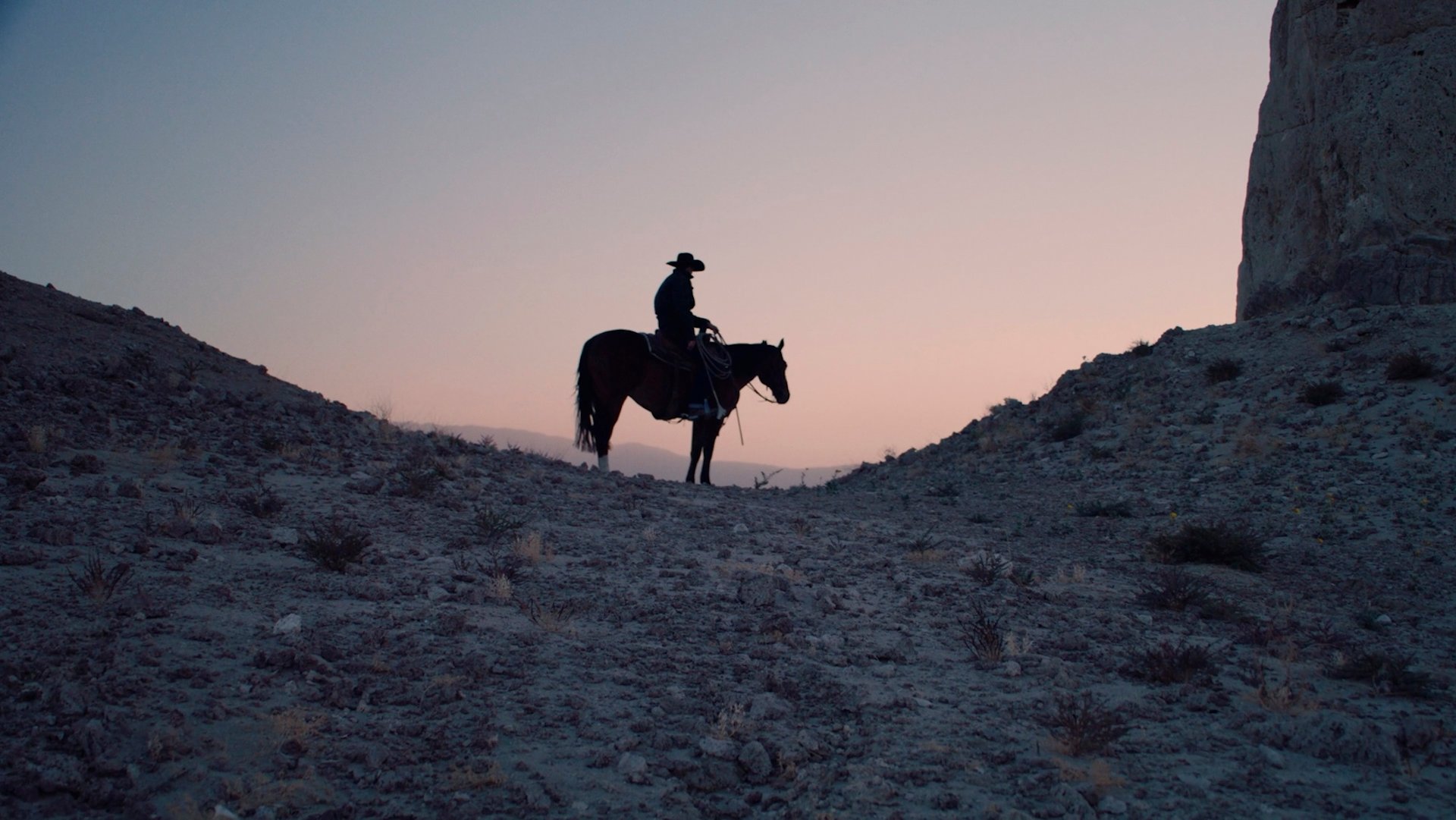
Doug Aitken, Lightscape, 2024 (still) © Doug Aitken Workshop
Doug Aitken: Lightscape
Marciano Art Foundation, Los Angeles, until 15 March
Doug Aitken’s performative works often feel like “happenings”, and his new multi-channel work Lightscape (2024) is no exception. The work starts with a cowboy riding out of the desert, and is soon intercut with a bearded man, then a young woman, driving into and around Los Angeles, passing shops and high-rises. Propulsive motion is followed by calm interludes, and vice versa. The project started with words and music. Around four years ago, Aitken began working with the Los Angeles Master Chorale and Grant Gershon, its artistic director.
"It was very organic and seamless, how these different media flowed into each other," Aitken says. "The story itself was starting to become clearer to me. I realised that I did not want to rely on traditional drama, and I wanted to see if it was possible to create a very fragmentary, very non-linear narrative, something that, to me, really expresses the way we see the world." S.C.
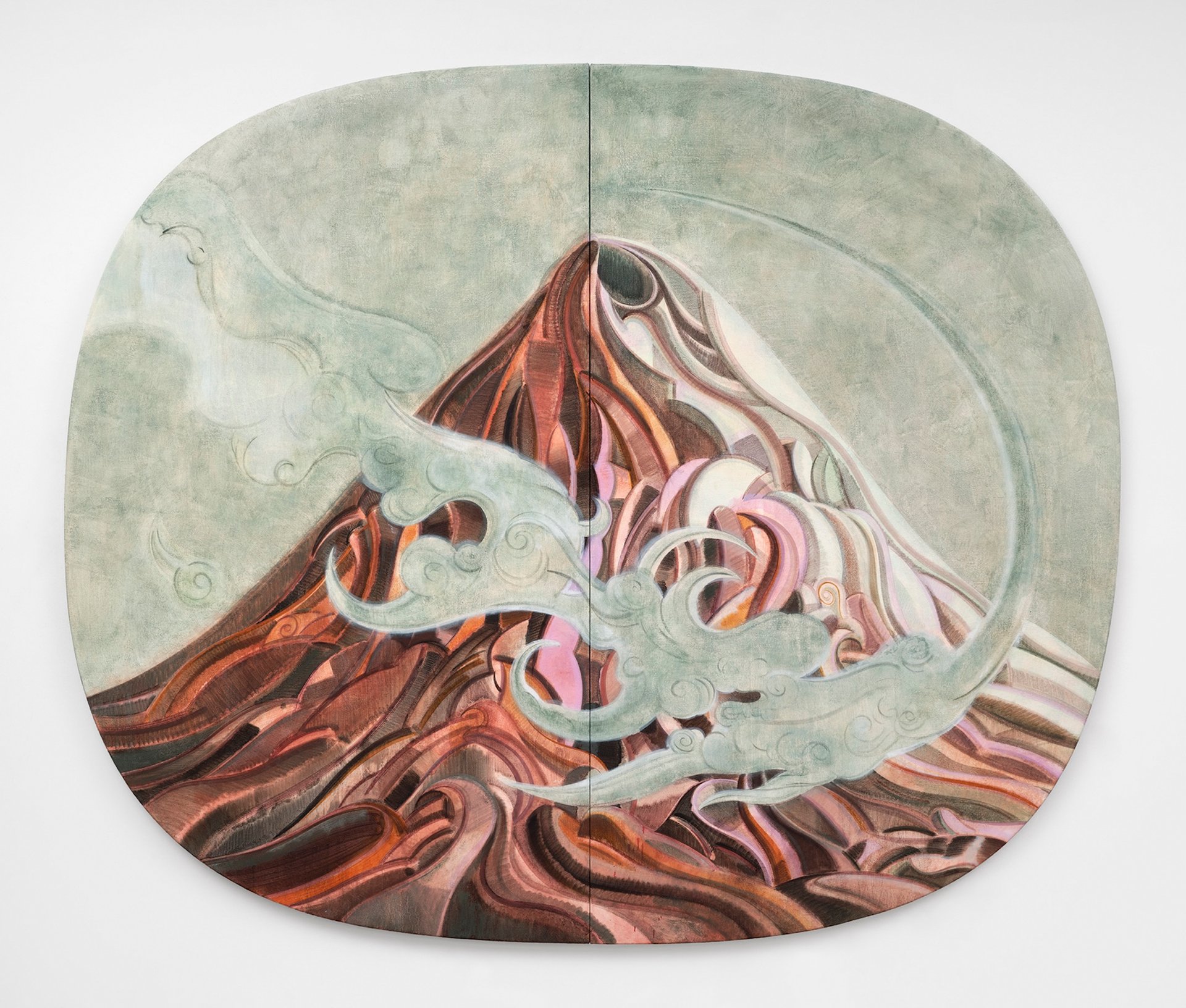
Su Yu-Xin, Heaven's Sigh (Mount Merapi), 2024 Courtesy the artist
Su Yu-Xin: Searching the Sky for Gold
Orange County Museum of Art, Costa Mesa, until 25 May
The Los Angeles-based Taiwanese artist Su Yu-Xin creates ethereal landscapes in her paintings using natural pigments collected from sites around the world. Her first solo exhibition in the US, Searching the Sky for Gold at the Orange County Museum of Art, features a series of recent paintings, rendered with pigments she makes from scratch, that visualise natural phenomena—rain, fire and clouds—that are features of the California coastline and other landscapes she encounters in her travels.
"There are maybe three or four companies in the world that produce artist-grade oil paints," the artist says. "Realising that almost every painter is working with the same selection of colours felt strange—like everyone cooking with the same limited set of ingredients. I wanted to see how far I could go with it. I thought maybe I’d make ten good colours, or 30. But instead it changed my entire understanding of painting and its history. Now my studio is filled with around 200 jars, cans and sacks of colours, ever-changing and growing." G.A.
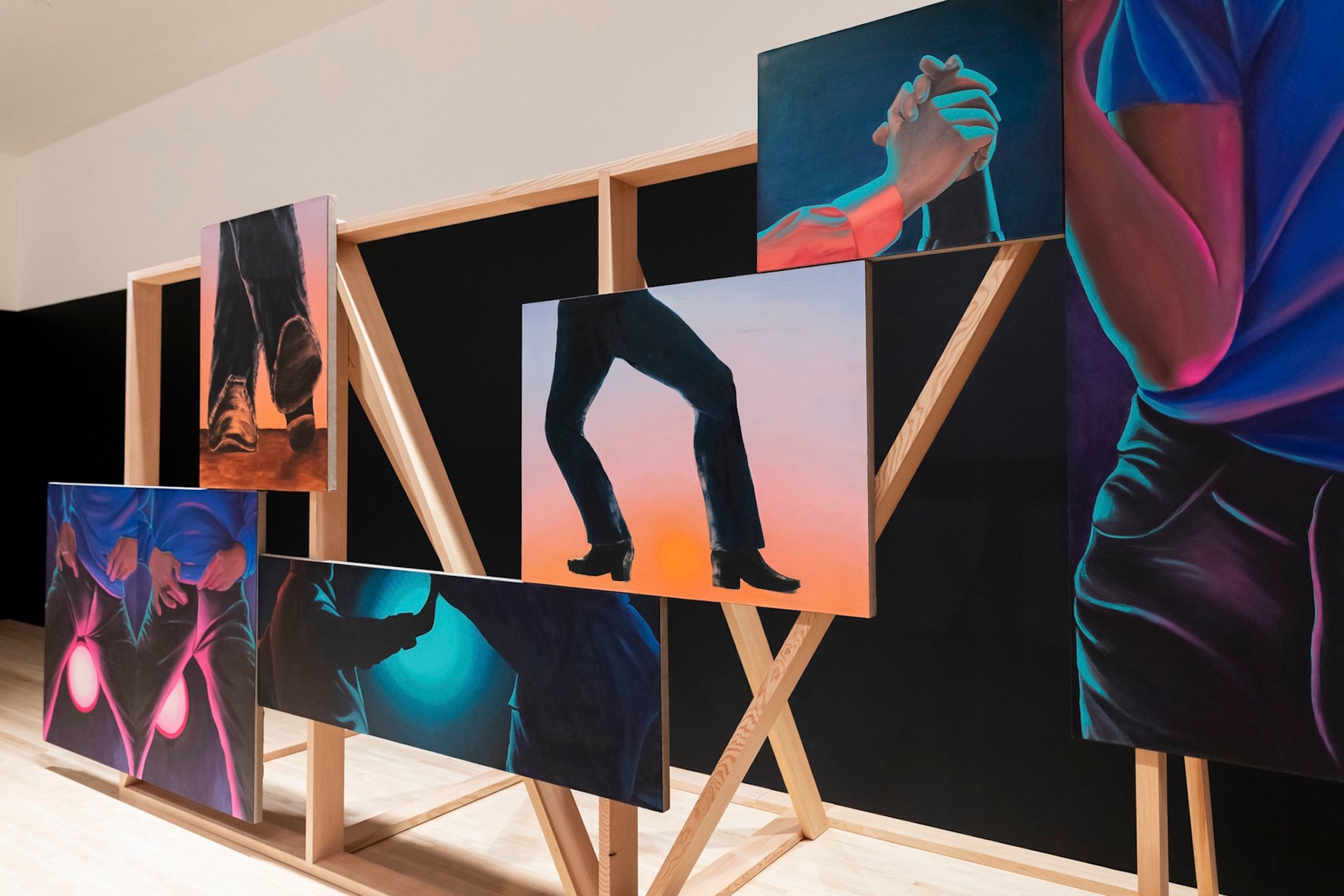
Installation view of MoCA Focus: Ana Segovia at the Museum of Contemporary Art, Grand Avenue Courtesy the Museum of Contemporary Art, Los Angeles. Photo by Jeff McLane
MoCA Focus: Ana Segovia
Museum of Contemporary Art, Grand Avenue, Los Angeles,
until 4 May
The Mexico City-based artist Ana Segovia’s winking, neon reinterpretations of the Mexican cowboy (or charro) archetype bend and break preconceived notions of normative machismo, translating film stills from Mexico’s cinematic Golden Age into an unabashedly queer new language. His current exhibition at the MoCA, part of the institution’s recently revived Focus series, draws from the content of a single film, I’ve Been Meaning to Tell You (1983), a synth-forward musical love story between Buck, an artist, and Mario, an undocumented ranch hand living in a fictional Southwestern town. Just one thing—this movie is not real.
"I was having a bit of a crisis when I first started. I felt I had exhausted a lot of my typical subject matter of Golden Age Mexican cinema," the artist says. "I’ve Been Meaning to Tell You is essentially an ode to guilty pleasures. It was so much fun to invent—the director, the stars, all of it. I knew that I wanted to use this script as a jumping-off point for a series of paintings, and I started telling everyone that the movie was real." T.A.


